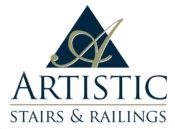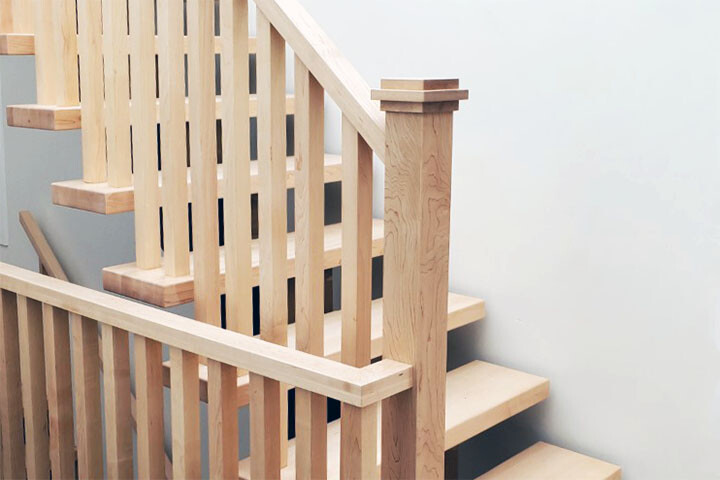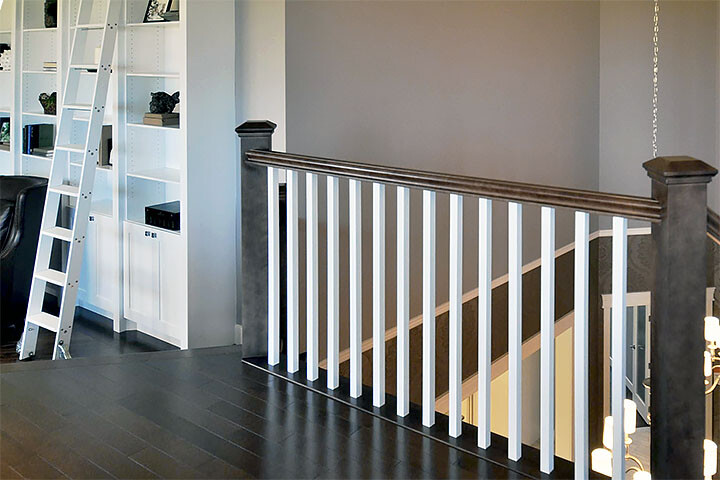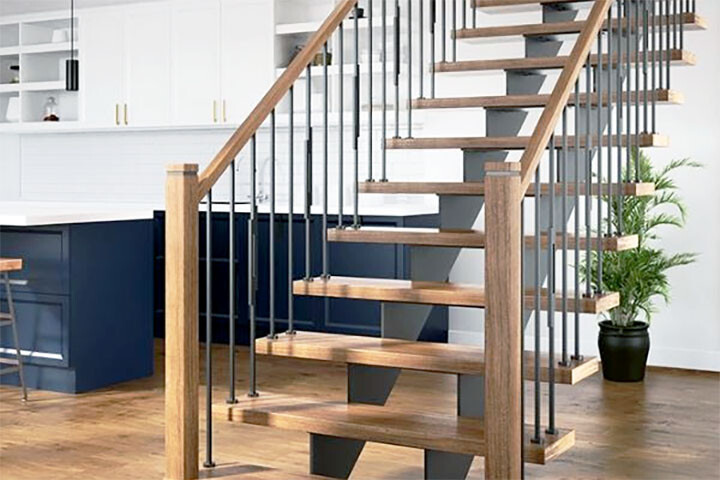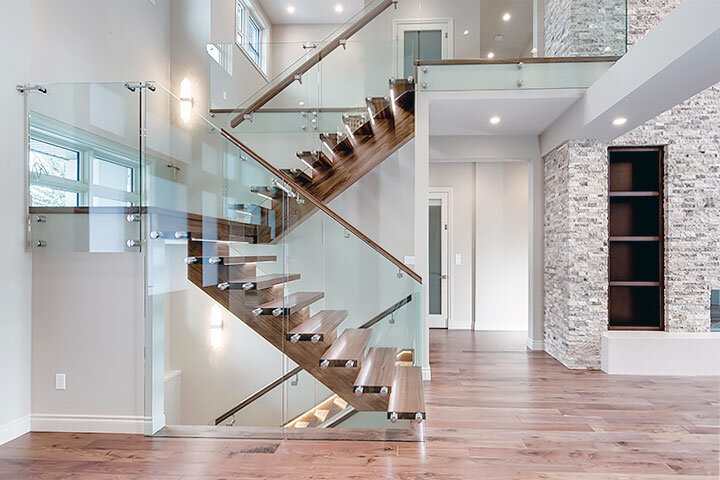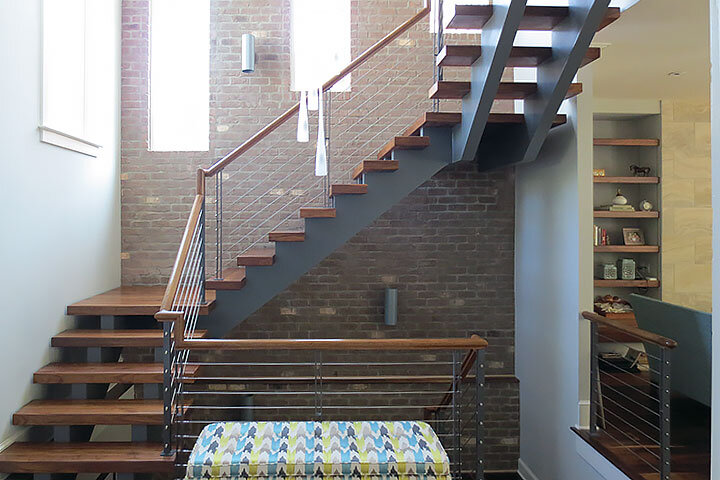Railings
Railings are perhaps where we have seen the most innovation in staircase design over the last few decades. In times past, the need for safety and durability left very few viable options for home railings. Traditional designs predominantly followed the system of a milled handrail supported by newel posts and balusters or metal spindles. Traditional railings are among the more economical options and are still very popular for new homes designs.
Advancements in building science and technology have made it possible to incorporate a host of new materials into new systems that are as stunning as they are interesting. Glass railings, cable systems and mesh panels are among the most popular choices for modern minimalists and contemporary designers.
Railings on Stairs
Railings on stairs have a real impact on the overal design. They can be pronounced and bold to make a statement or subtle and inconspicuous to help emphasise some of the other design elements. We have been building and installing home railings for over 40 years, and have extensive experience with modern systems. We pay attention to every detail to give you artistic railings that are safe and reliable. See below for our railings catalogue of parts and systems. Visit our showroom to see all of the options or for a free consultation.
Wooden Handrails
We mill all of our wooden handrail profiles with the same craftsmanship and care that you will notice in all of our projects. Take a look at the standard and upgraded profile options and see how wooden handrails are used in different railing systems.
Wood Balusters
Wood balusters come in a variety of profiles to accommodate a large variety of styles. Classic or traditional railings use turned wood for extra ornamentation. Modern and contemporary railings use subtle profiles, sometimes grouping balusters together to create a pattern or flow.
Metal Spindles
Spindle stair railings present clean lines and bring additional textures into the mix. We have spindle options for all styles, with featured collections that are well suited to new homes and staircase renovations.
Railing Glass
Glass railings have been used in commercial settings for decades and have quickly risen as one of the most popular choices for home railings. We have glass panel and structural glass systems, each with several options that can be customized to achieve the perfect aesthetic.
Cable Railings
Cable railings are part of a paradigm shift from verticle to horizontal lines in contemporary railing design. Due to their superior strength, thinner guages can be used for the same level of structural integrity. This allows more light and air to pass through with an open line of sight.
Designing Your Railings
Our award-winning design team embraces the challenge of designing creative, one-of-a-kind staircases that stand out as true works of art. The railings play an important role. Take a look at our style gallery to see both traditional and modern railing styles. Let us know which ones you like and we can set up a free consultation to start designing something spectacular for your home.
